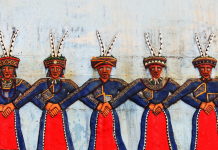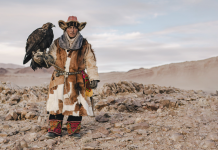Exploring the faunal boundary between Asia and Australia
Text YD Bar-Ness
There are many crossroads in Asia – places where journeys intersect, cultures mingle, and languages combine. There are also natural crossroads; where Asia meets the other continents, a complex interchange of living species that is constantly occurring. In the far southeast, the Asian ecosystem meets Australia in a region of islands known to biogeographers as Wallacea.
Wallacea is named after the pioneering ecologist and geographer Alfred Russel Wallace (1823–1913), one of the titans of 19th-century British science. His observations of zoological differences to the northwest and southeast of an imaginary line through the Indonesian island of Sulawesi were part of a body of work that, alongside Charles Darwin, reinvented biology through the lens of evolution. We can follow his career to his co-authoring of the theory of evolution with Charles Darwin while he was working as a collector in Asia. We’ll then return to this frontier zone to explore the geological and present-day geography of Wallacea, and connect his work in the area with the fundamentals of biogeography.
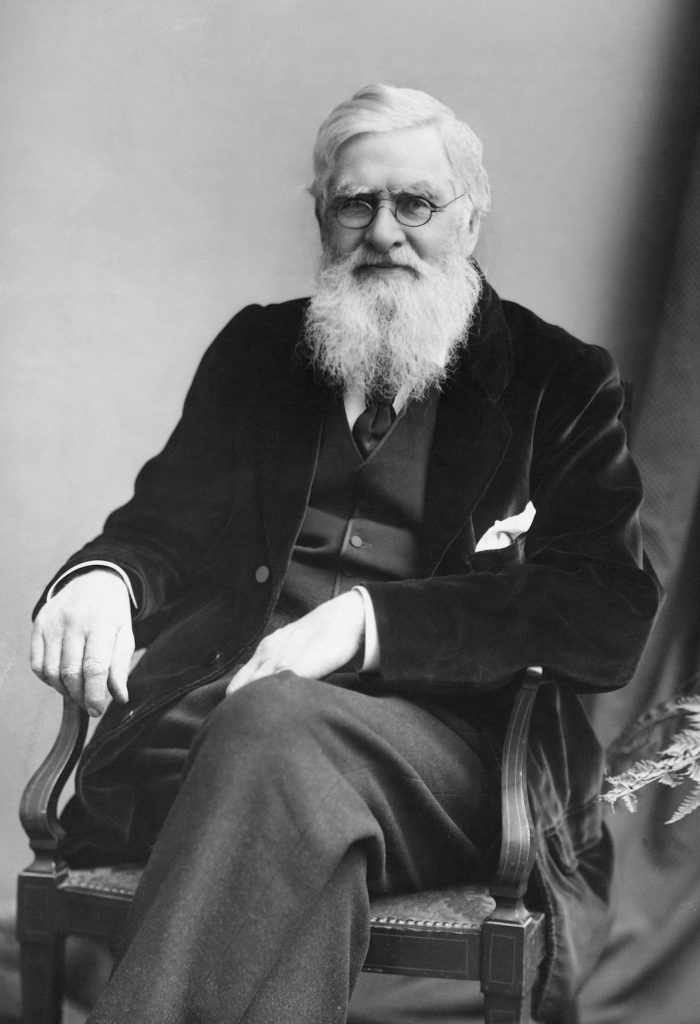
The collector as explorer
As Britain’s maritime network evolved, there were new opportunities for adventurous souls to explore the world and observe nature in all its diversity. Alfred Russel Wallace worked as a surveyor, teacher and engineer in his early adulthood, and in 1848 joined a friend on a four-year expedition to the Amazon as an entrepreneurial collector. To “collect” was to be a hunter of zoological trophies great and small and to send these specimens back to Europe for private and public collections. Rare and previously unknown species had distinct monetary value, and after four years collecting many thousand types of birds, plants, beetles and more, Wallace could expect a substantial windfall from efforts. Wallace also honed his skills as an anthropologist, linguist and cartographer during this fieldwork, and was the first European to “discover” regions of Amazonia.
Tragically, almost his entire collection was lost at sea when the ship caught fire, and Wallace and the surviving crew were fortunate to be rescued at sea from a lifeboat. From memory and a handful of salvaged papers, he was able to publish maps and scientific papers upon his return to England. He then worked towards another journey, this time to the vast archipelago southeast of Asia. Beginning in 1854, he would spend eight years travelling through the jungles and meeting the people of these diverse islands. Working with the colonial offices of the Dutch and British Empires, his collecting efforts were more successful, but it is his scientific work for which he is remembered. He wrote, in his best-selling narrative The Malay Archipelago, that he travelled more than 22,000 kilometers and collected 109,700 insect specimens, 7,500 molluscs, 8,050 birds, 310 mammals and 100 reptiles.
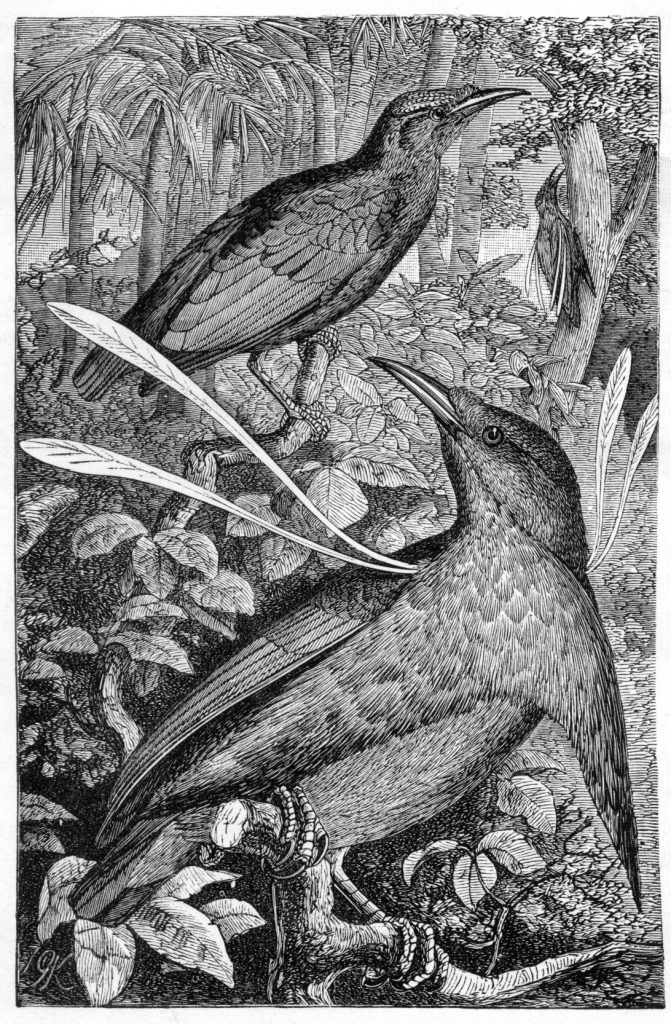
From geology to zoogeography
These expeditions gave him a rare opportunity to observe the vast diversity of living species in the wild, and – unlike the curators of museums – to recognise the physical barriers between different species. Mountains, rivers, straits and cliff lines were often also the boundaries between slightly different animal species.
He identified a line running through the Makassar Strait, a deep stretch of water between the east coast of Borneo and the western coast of Sulawesi (then known as Celebes), as a significant barrier to animal species. To the west in Bali, Borneo, Java and the Asian mainland were monkeys, apes, rhinoceros, squirrels, tigers, and hornbills. To the east in Lombok, Sulawesi, Timor and the Australian mainland were tree kangaroos, cockatoos and honeyeaters.
Now known as the Wallace Line, it is the western edge of a transitional region between Asian and Australian eco-regions. When paired with the Weber Line to east of Timor (named after the Dutch scientist Max Carl Wilhelm Weber), a region of surprising biodiversity patterns emerges, known as Wallacea.
The patterns of animal species can be clarified by studying the geological history of the region. Looking at a map of water depths, it is clear that the Wallacean islands are situated in, but separate from, the two continents. Dominated by the island of Sulawesi and including Flores, Lombok, Timor and many others, Wallacea’s dry land is surrounded by deep water.
To the northwest, the Sunda Continental Shelf is the submerged southeastern corner of the Asian continent, and to the southeast, the land masses of New Guinea, Australia and Tasmania sit on the Sahul Continental Shelf. During the ice ages when sea levels were lower, the bodies of water along the Wallace and Weber Lines were deep enough to remain filled. By contrast, the waters west of Borneo toward Malaysian Peninsula were exposed as land bridges and the fauna is more similar to that of mainland Asia.
Wallacea is actually less biodiverse than the islands of the continental shelves. You could think of the region as being too distant from either Australia or Asia to have been colonised by an abundance of animal species, whereas the islands just offshore of the continents contain many elements from those much larger collections of species.
In Wallace’s 1880 book Island Life, he used his experience in the Malay Archipelago to classify three zoological situations: isolated oceanic islands, recently-linked continental islands and ancient-linked continental islands. By combining geological history and physical proximity this lesson from Wallacea helped provide the basis for the modern study of biogeography.
Describing evolution
During his time in Asia, Wallace independently worked on a ground-breaking theory to explain the vast array of animals and other living things. While residing in Sarawak on the west coast of Borneo in 1855, he wrote an investigation of the global and local distributions of animals entitled On the Law which has Regulated the Introduction of New Species.
He gathered that every species on Earth had appeared at the same time and at the same place as a very similar species – a statement now called The Sarawak Law. Today, we could describe these appearances as the branching points of the taxonomic Tree of Life, but at the time, this theory lacked a process to explain this observation.
He regularly corresponded with other scientists of the day, including Charles Darwin. Famous for his around-the-world narrative of The Voyage of the Beagle, Darwin had been working on a theory of evolution by natural selection – in which only the most well-adapted organisms reproduced and in which small variations led to the many distinct forms of life.
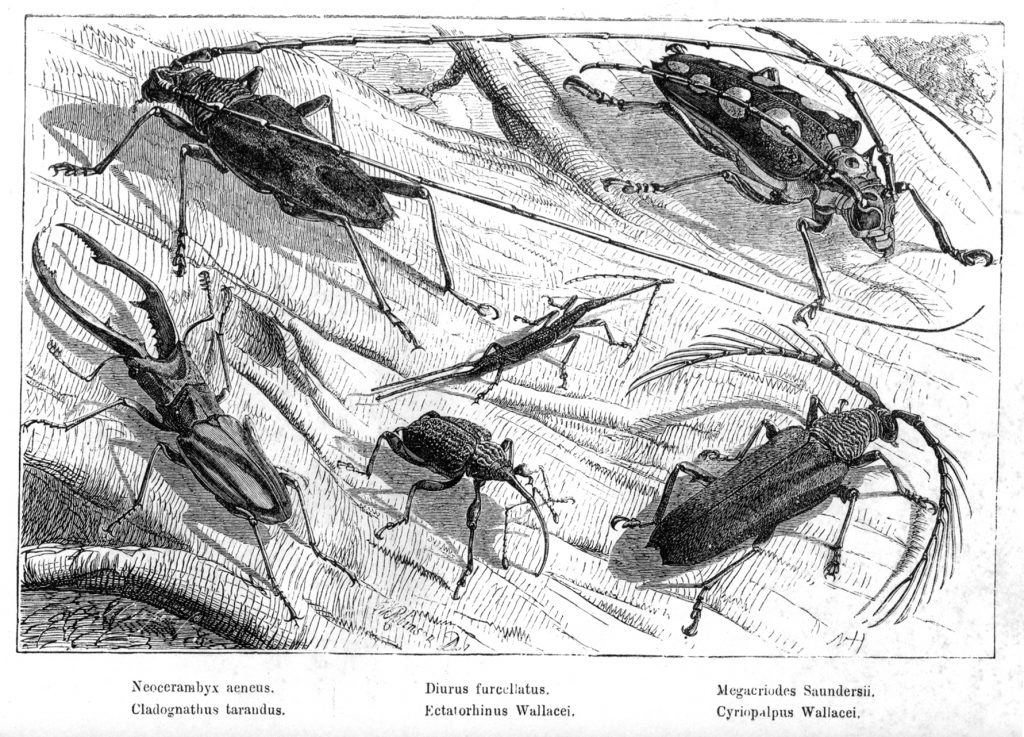
In early 1858, Wallace was struck with a fever while on the island of Ternate in the Molucca Islands midway between Borneo and New Guinea. Faced with his own mortality, he thought of the staggering numbers of animals that must be dying constantly – otherwise the planet would be completely covered by the fastest-reproducing species. He later wrote, “Vaguely thinking over the enormous and constant destruction which this implied, it occurred to me to ask the question, why do some die and some live? And the answer was clearly, on the whole the best fitted live…”
He wrote up his new theory and sent it to England to Charles Darwin for review and input. Seeing in Wallace’s paper conclusions that closely mirrored his own unpublished research, Darwin was spurred to extraordinary action. At a scientific meeting on 1 July 1858, their work was presented to British academia as a joint publication. Wallace, a less prominent scientist, remained grateful to Darwin for bringing the work into prominence, but more than 150 years later, Wallace’s name has been almost entirely eclipsed.
Wallace lived until 1913, publishing widely popular travel and science books and pursuing interests in social activism and spiritualism in his later years. While widely respected and internationally famous, he found himself at odds with many of his scientific colleagues for his enthusiasm for the supernatural, and after his death his renown faded. Today, in the 21st century, his memory and achievements have been championed and acknowledged anew.
In Wallace’s footsteps
Today, you can visit the islands of the Archipelago and follow in Wallace’s footsteps. The times have certainly changed, and even the most remote islands he visited are now linked into the global datasphere and part of the international culture.
Like Wallace’s famous book, you can begin in Singapore. You can travel east to the Malaysian state of Sarawak on the western coast of Borneo. Here, just near the capital of Kuching – City of Cats – you’re just upriver from Santubong National Park where Wallace wrote up the Sarawak Law. You can look out to the shallow waters and remember that you are, geologically, still connected to the Asian continent. Behind you, the immense rainforests of Indonesian Kalimantan hide countless species awaiting discovery and on the far side of the mountains, the Makassar Strait marks an important transition point.
From there, the islands of Wallacea await – Lombok, Timor, Ternate, the Moluccas and many more. You’ll have woodpeckers to the west and parrots to the east. You could spend a lifetime studying the animals of these tropical islands and waters, and yet there’d be many more to find still. There’s no better laboratory for studying biological geography than this archipelago between two continents.
For more stories and photos, check out Asian Geographic Issue 116.


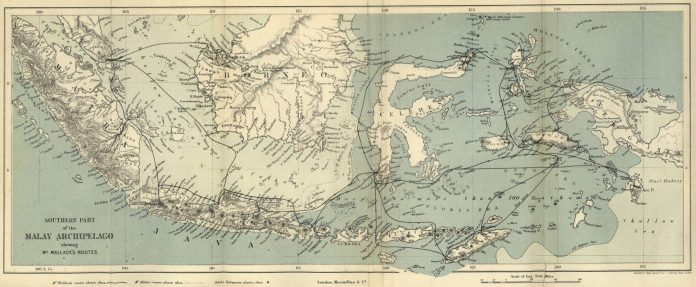

![The Road to Independence: Malaya’s Battle Against Communism [1948-1960]](https://asiangeo.com/wp-content/uploads/2021/07/WhatsApp-Image-2021-07-26-at-11.07.56-AM-218x150.jpeg)

